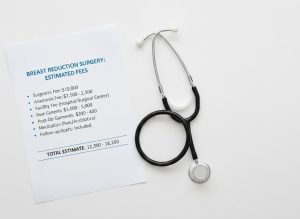When someone decides to have plastic surgery, the first number that comes to mind is usually the one presented during the initial consultation. However, that number rarely reflects the real cost of the procedure.
The hidden costs of plastic surgery refer to expenses that don’t appear in the initial estimate but directly impact the final price.
In the United States, it’s common for a quote to cover only the surgeon’s fees, leaving out other important expenses.
Understanding this difference helps patients plan financially and avoid surprises along the way.
What’s usually included in a plastic surgery quote
Before discussing the extra expenses, it’s worth understanding what typically makes up the main cost of a plastic surgery procedure.
| Item | Description |
| Surgeon’s fees | Payment for the surgeon’s work and primary surgical team |
| Surgical facility fees | Use of the operating room, equipment, and technical staff |
| Anesthesia | Fees for the anesthesiologist and the medications used |
| Basic preoperative tests | Required laboratory evaluations before the procedure |
These are the core elements of an initial quote. However, each clinic determines what is or isn’t included — which explains why prices vary so much between different locations and cities.
In places like Miami, where demand for cosmetic procedures is high, rates may fluctuate depending on the type of facility used.
Costs that often don’t appear in the initial quote
Most hidden costs of plastic surgery appear after the first consultation. These are expenses patients usually discover throughout the preparation and recovery process.
1. Additional consultations and evaluations
Before even entering the operating room, you’ll likely need to go through additional consultations. Many surgeons require patients to visit their primary care physician for a full preoperative evaluation, especially if they’re over 40 or have preexisting medical conditions.
These extra appointments cost between $150 and $300 each in the United States and rarely appear in the initial quote.
If you need clearance from a cardiologist or another specialist, you can add another $200 to $500 to the total. Your health insurance may cover part of these tests, but many providers consider evaluations for elective surgeries as non-covered expenses.
2. Medications and postoperative supplies
After surgery, most patients need to purchase pain relievers, antibiotics, compression garments, and dressings. Each item comes with its own cost and is rarely included in the initial estimate.
- Compression garment or surgical bra: $80 to $200
- Antibiotics and pain medications: $50 to $150
- Dressings, gauze, and drains: $30 to $100
These amounts might seem small individually, but together they represent a significant expense in the final budget.
3. Revision surgery costs
The outcome doesn’t always meet expectations, and minor revisions may be required.
According to the American Society of Plastic Surgeons (ASPS), between 6% and 9% of patients undergo some form of revision after their initial procedure.
These touch-ups, although smaller, still involve anesthesia, operating room time, and professional fees — usually paid separately.
4. Recovery care and follow-up
Recovery also includes services that aren’t always part of the package, such as lymphatic drainage, postoperative follow-ups, and, in some cases, complementary therapies to reduce swelling and improve healing.
Each lymphatic massage session, for example, can cost between $100 and $200.
5. Loss of income during recovery
Another important factor among the hidden costs of plastic surgery is the financial impact of taking time off work. Recovery from procedures like a tummy tuck or mommy makeover often requires two to four weeks away.
This time off — whether unpaid or with reduced income — should also be considered in the financial planning.
6. Travel and accommodation expenses
For patients traveling to Miami specifically to undergo surgery at Smart Plastic Surgery, travel-related costs can be substantial. Airfare, hotel stays for several days (or even weeks), local transportation, and meals — all of these add up quickly.
Many patients also need a companion, which doubles travel expenses. You should also keep in mind that you won’t be able to drive immediately after surgery, so transportation services or Uber rides can add another $100 to $300 during your stay.
7. Long-term maintenance
Some procedures require ongoing maintenance. Breast implants, for example, don’t last forever — the average lifespan is 10 to 15 years before they need to be replaced. The replacement procedure can cost as much as the original surgery.
Facial procedures may require minor “touch-ups” after a few years, and liposuction doesn’t prevent future weight gain.
Understanding these long-term expenses is an important part of realistic financial planning.
Initial quote vs. real costs
| Item | Estimated cost |
| Surgeon’s initial quote | $8,000 |
| Additional preoperative consultations | $300 – $500 |
| Laboratory and imaging tests | $300 – $700 |
| Prescribed medications | $150 – $400 |
| Compression garments and supplies | $250 – $600 |
| Loss of income during recovery | $1,500 – $5,000 |
| Nursing assistance (optional) | $600 – $1,500 |
| Scar treatments | $0 – $2,000 |
| Estimated real total | $11,100 – $18,700 |
As you can see, what starts as an $8,000 quote can easily turn into $15,000 or more once all the hidden costs of plastic surgery are taken into account.
How to prepare financially
Now that you’re aware of these additional costs, how can you prepare properly? Start by having an open and detailed conversation with your surgeon. Ask for a complete list of everything you’ll need — from the first consultation to six months after surgery.
Consider setting aside a financial cushion of at least 30% above your initial budget. For example, if your procedure costs $10,000, aim to have $13,000 available. This safety margin provides peace of mind and helps you avoid unpleasant surprises.
Ask about financing options. Many clinics, including Smart Plastic Surgery, partner with medical financing companies that offer payment plans. Compare interest rates and make sure you fully understand the terms before signing any agreement.
Financial transparency and patient safety
Clinics committed to patient experience follow clear policies of full transparency regarding pricing and every step of the procedure. At Smart Plastic Surgery, each patient receives a detailed cost breakdown before confirming the surgery — including items that may lead to additional expenses.
This level of clarity minimizes unexpected costs and builds trust between the patient and the medical team. Knowing exactly what to expect allows patients to focus on their recovery process without worrying about surprise bills.
👉 Schedule your consultation at Smart Plastic Surgery in Miami



